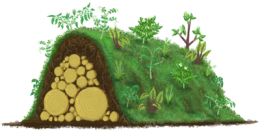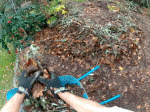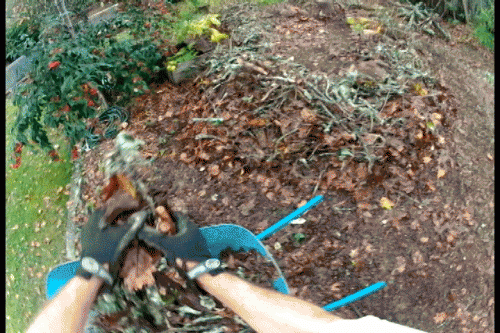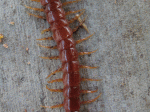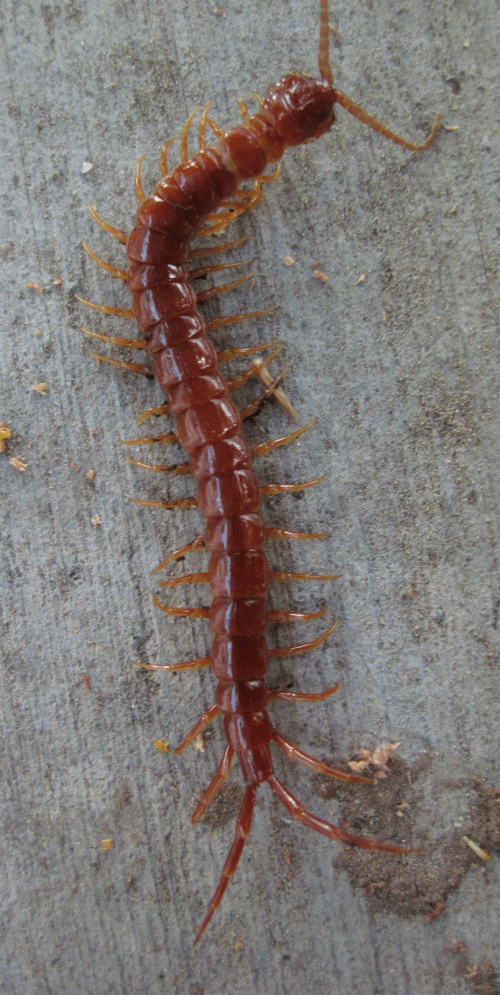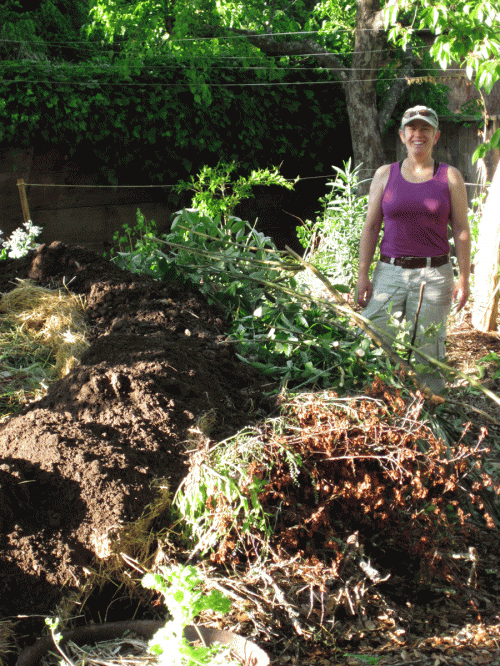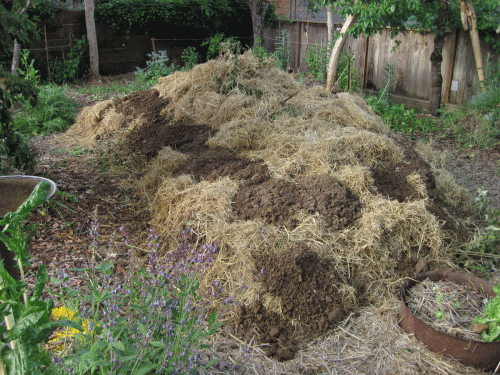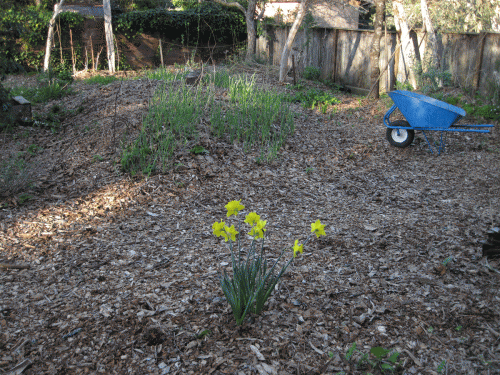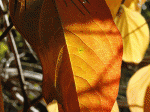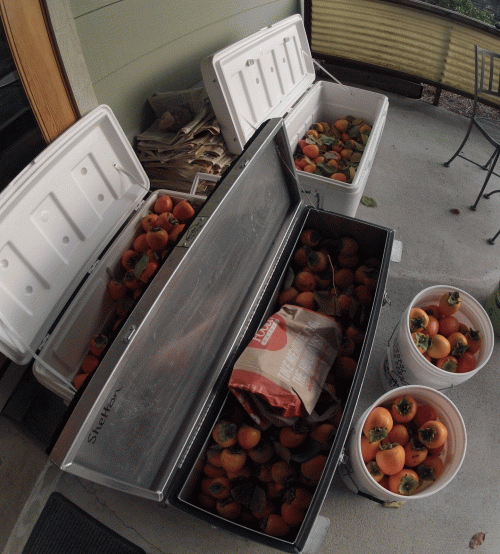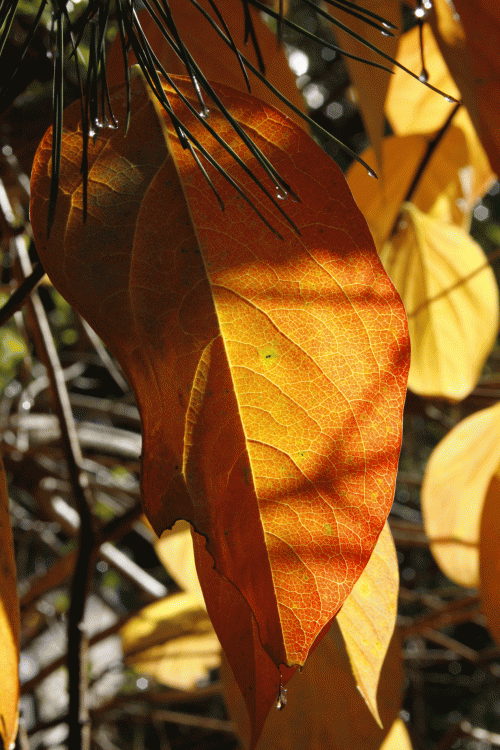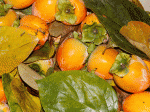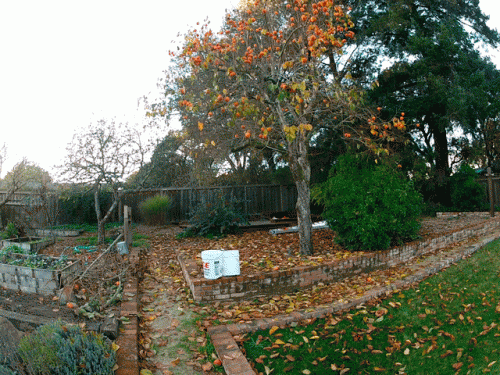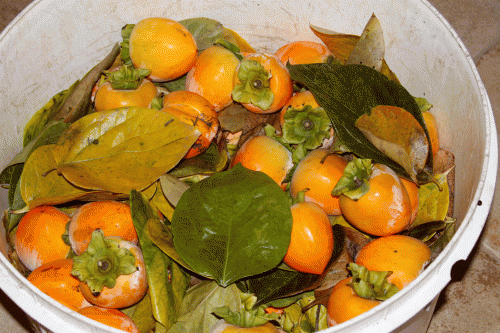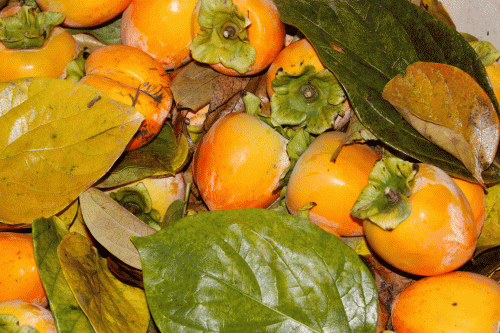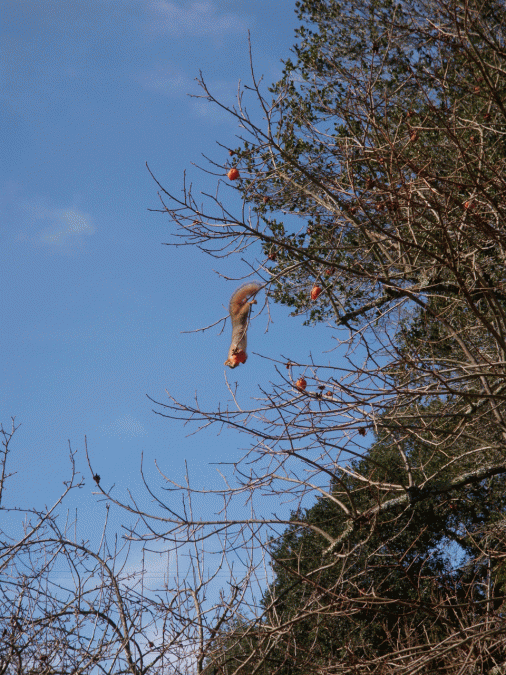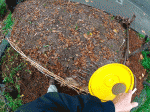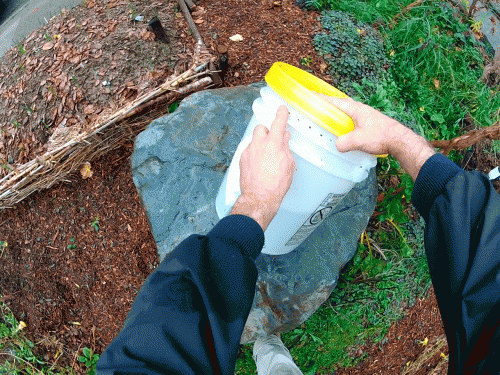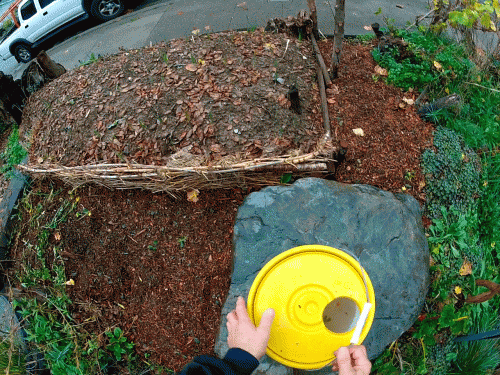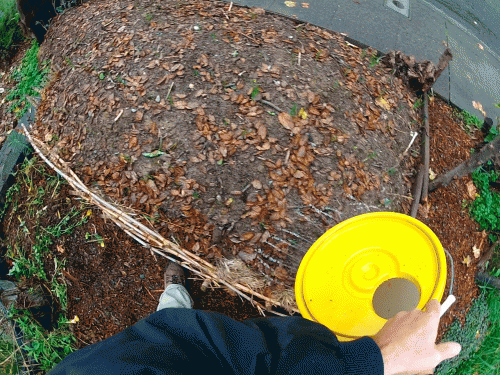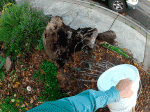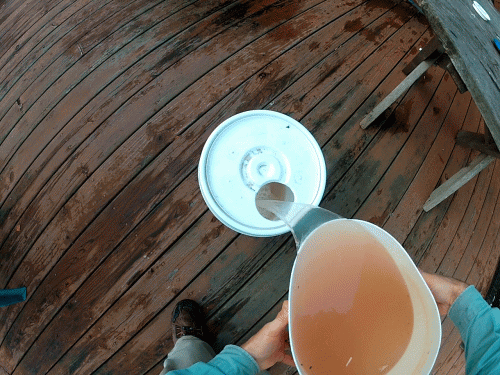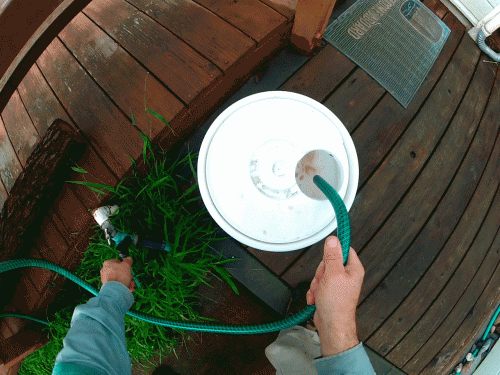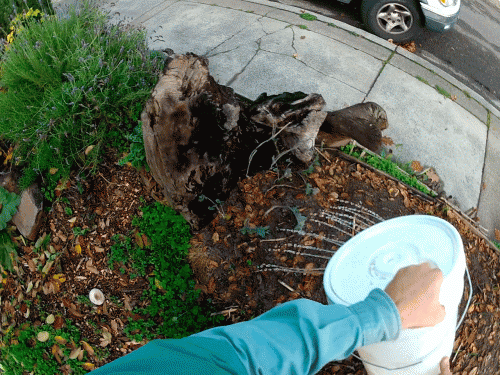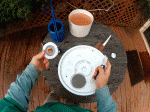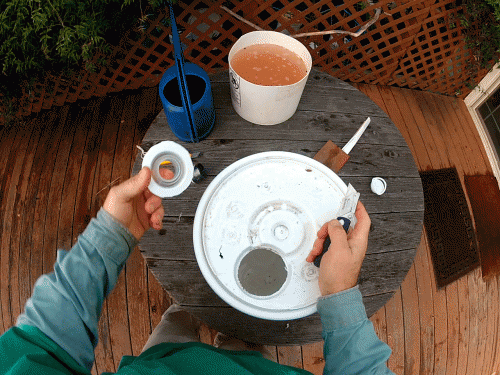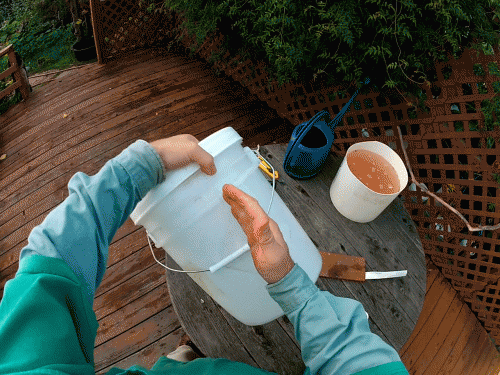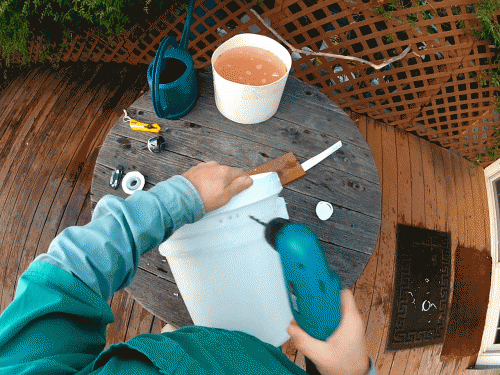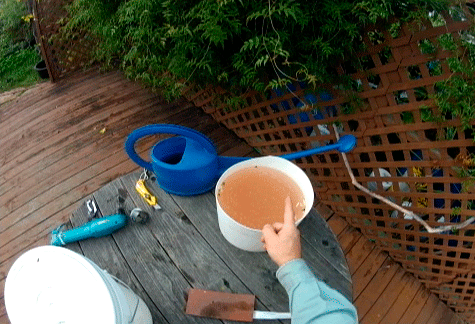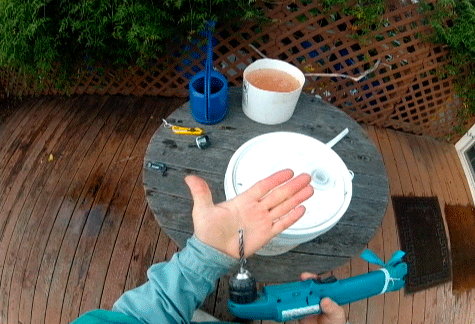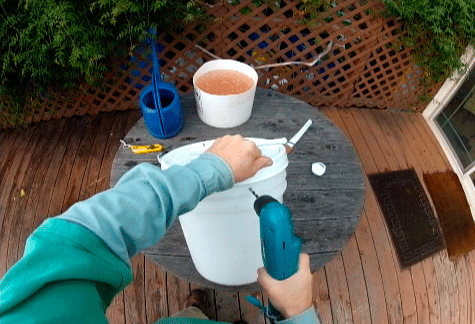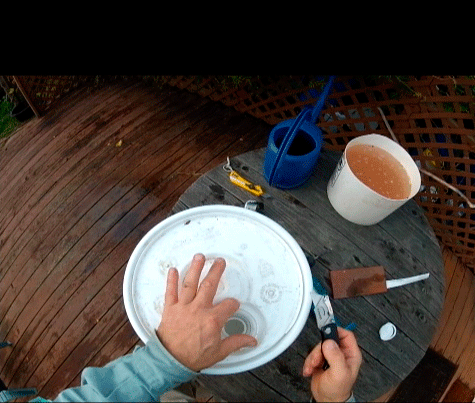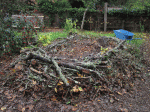
Today is my fourth posting of rebuilding hugelkultur Food Ridge West.
Go to Hugelkultur to see a description of this European garden art.
Today’s video shows the final stages of building the base of the hugelkultur. Its “keyhole garden” shape is discussed.
Hugelkultur 4 of 4 (video):
From Tony’s project (pics):
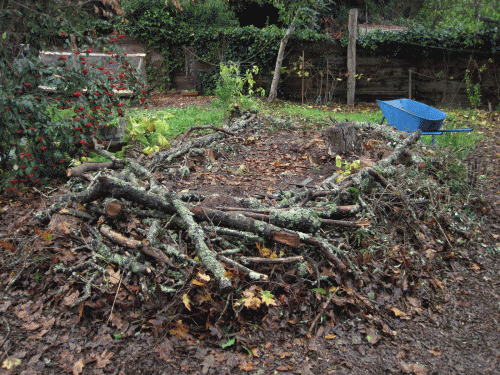 Heavy limbs weighing down the lighter sticks on Food Ridge West. This woody mesh of twigs, sticks, and limbs makes a good base for organic debris layers to come. Note all the nooks and crannies that will be available to garden critters. HABITAT!!!
Heavy limbs weighing down the lighter sticks on Food Ridge West. This woody mesh of twigs, sticks, and limbs makes a good base for organic debris layers to come. Note all the nooks and crannies that will be available to garden critters. HABITAT!!!
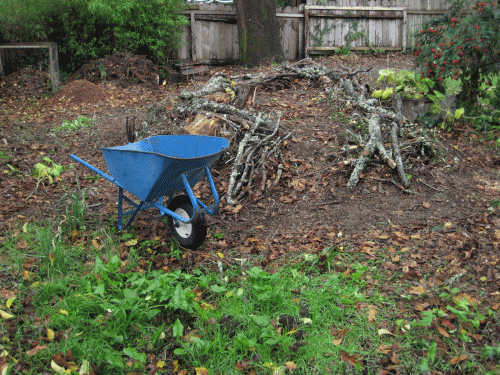 Entrance to the keyhole garden hugelkultur, Food Ridge West.
Entrance to the keyhole garden hugelkultur, Food Ridge West.
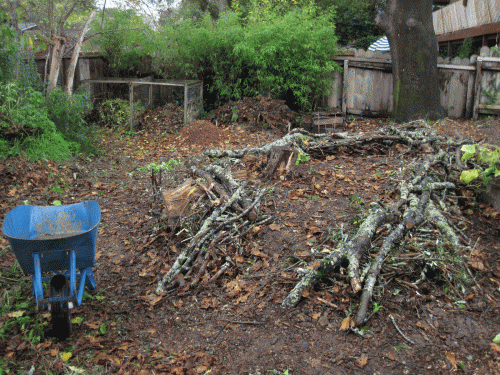 Close-up view of entrance to the keyhole garden hugelkultur, Food Ridge West. The added layers of organic debris will rise over the vertical log (left, inside the keyhole garden bed), only to settle back down again next year. Each year’s added layers mean better soil for crops.
Close-up view of entrance to the keyhole garden hugelkultur, Food Ridge West. The added layers of organic debris will rise over the vertical log (left, inside the keyhole garden bed), only to settle back down again next year. Each year’s added layers mean better soil for crops.
Some images of hugelkultur.
For a detailed discussion,
clear graphics, and lots of pics of hugelkultur,
Happy hugelkultur habitat making. See you tomorrow.
Tony

